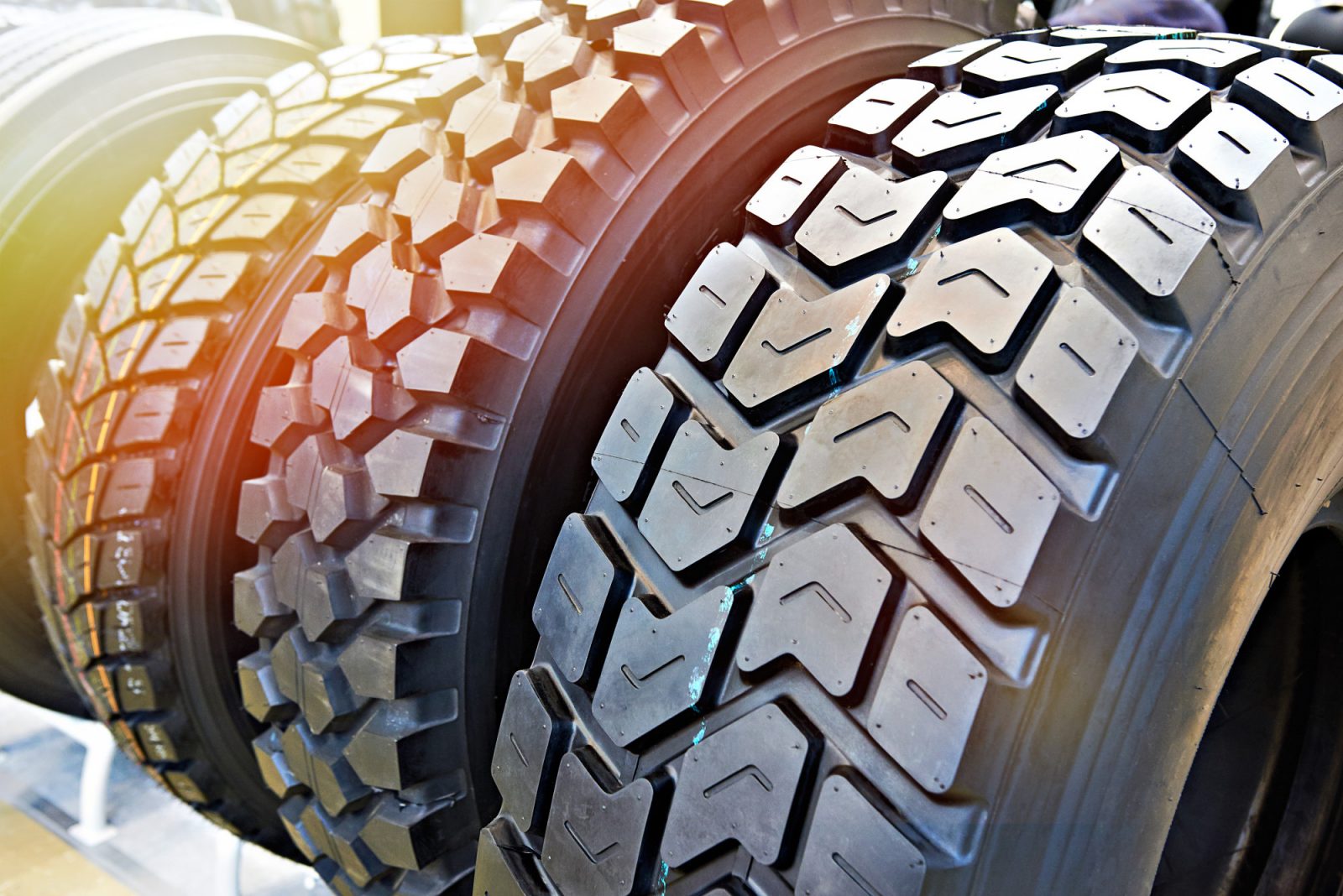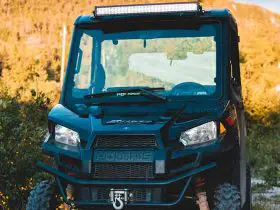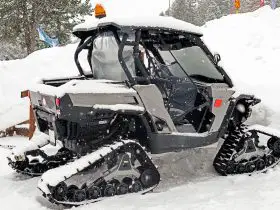One of the quickest and easiest ways to change the performance of your UTV is to change out the tires.
Maybe you aren’t happy with the performance of the stock tires. Or maybe it’s just time to replace worn ones. Either way, buying UTV tires involves making several decisions to get just the right set for your vehicle.
Top of the list is knowing what you need a new set of tires to be able to do. Are you needing better top speed? Maybe you have been struggling to get better traction.
Either way, you will find numerous options to meet your needs. Understanding certain things about UTV tires will help you make a great choice.
Table of Contents
1. How Do You Plan to Use Your UTV?
Some UTV tires in snow will leave you spinning your wheels, while the same type of tire lets you leave others in the dust when racing across sand. Knowing how you plan to use your UTV and the terrain you’re most likely to ride in is the first step toward picking among types of tires for your ride.
Mud Tires
If you enjoy finding huge mud holes and trying to plow through them, you probably already know that stock tires don’t do well in thick mud. Mud tires have the lugs spaced far apart, which helps clean mud from between the treads as you ride.
These aren’t the best option for dry land use as they’ll be highly uncomfortable on rocky ground or hard trails. They’re also pretty heavy so expect an impact on performance if your UTV has a lower horsepower engine.
Sand Tires
These tires give you optimum performance while reducing strain on your vehicle as they float across the surface of the sand.
The front tires are almost bald with a ridge running down the center, while the rear ones have a paddle-like design that keeps the vehicle moving forward. You’ll find them in action at the Best in the Desert Racing series or even the Dakar Rally where UTVs have their own division.
Rock Tires
Perfect for off-roading, these tires can handle jagged rocks as they have increased puncture resistance. Their tread lugs are closer together with sidewall tread to give them maximum traction, and rock ejectors keep the treads clear.
They’re often used as an all-around tire for UTVs since they work as well or better than stock in most conditions. They look a lot like regular truck tires, so they handle pavement well.
Snow Tires
Less commonly used, snow tires work great for getting your vehicle across fresh snow. The widely spaced lugs clear out slow and keep you on top of the surface. Some are made of special rubber to keep the tire soft even in freezing temperatures.
Racing Tires
These tires give you great grip, speed, and control on hard tracks and roads for racing. (If you participate in other types of racing such as mud, these would not be the choice for you.)
These tires are puncture-resistant and cost more than average. They’re designed to improve forward traction and cornering. The large, closely spaced lugs are a good design even on courses with sand, mud, and rocks.
All-Terrain or All-Purpose
The strength of these tires is also their weakness. Because they’re meant as all-around tires, they’re good for different purposes but not great at any of them.
They are similar to what might have come stock on your UTV but heavier. It’s a good go-anywhere tire, great for taking on the increasing number of trails in state parks.
2. What Tread Pattern Works Best?
If you aren’t sure you want a purpose-specific tire, knowing what makes one tread pattern different from another can help you choose the right one for you. Even with an all-terrain tire, you can pick a tread that leans toward the kinds of conditions you’ll most likely drive in.
Tall and Skinny
This pattern features large gaps between each tread that can deal with softer solids and mud. Penetration into the surface and the ability to clean out the treads take precedence here. They will wear quicker on hard surfaces and make more road noise. They can be less stable on hard surfaces as well and poor at high speeds.
Short and Wide
For harder surfaces, the narrower tread gaps of this pattern work better, including on rock and hard dirt. The goal of this tread is to increase the contact surface area, so they are better at high speeds and have a longer tread life. But they will suffer from low traction in soft soils and mud.
3. Construction of UTV Tires
When you’re looking at the construction of UTV tires, you’ll find several terms you need to understand. They have to do with how the rubber is put together for the tire, as well as the shape of the end result.
Radial or Bias
The difference here has to do with how the tires are made, which impacts stability, pliability, and handling.
Radial tires give you a more efficient performance, making them great for running a long time without stopping. They resist cuts and punctures well, run cooler, and provide better traction overall. Their construction makes them more flexible, which reduces rolling resistance and provides better fuel use.
Bias tires provide a smoother ride with stronger sidewalls. They’re easier to repair if damaged, flex well for off-road use, and provide a better grip overall.
Ply Rating
When looking at the difference between tires, it’s important to focus on the ply rating. This refers to the number of layers of fabric used in building a bias tire. The rating gives you an indication of how the tire is meant to be used.
The higher the rating number, the tougher the tire is. A 2-ply tire will be on the light side and unable to handle rough terrain that might lead to punctures. A 12-ply tire will be a heavyweight built for the rough ground because it is puncture-resistant and longer-lasting.
4. Sizing of UTV Tires
When it comes to tires, bigger isn’t always better, but it doesn’t have a place. Different tire sizes change the performance of your vehicle and can cause damage if you don’t maintain the correct spacing between the tires and other parts. It’s recommended not to increase the height or width by more than an inch beyond the recommended size.
Bigger UTV Tires
Increasing the size of the tire on your UTV adds speed and flexibility, along with ground clearance. Keep an eye on the spacing between tires, fenders, and suspension. Also, watch to see how the additional weight and width impact the engine.
Smaller UTV Tires
If you go with a smaller tire, you’ll get a firmer ride. You can get quicker acceleration but at the sacrifice of top speeds. A smaller tire can cause stress on the axles and engine and reduce the control you have of the vehicle.
Width of UTV Tire
A narrower tire means less tread making contact with the ground, so you’ll have less traction. A wider tire gives you that traction but also reduces your braking power. Going too wide can damage your suspension and steering as well.
5. Know the Numbers on a UTV Tire
When choosing new tires, go for tires equal or close to the height and width of the originals. The right tire size is the one that gives you the best combination of engine power, gearing, and handling.
The numbers on the side of a tire give you the information you need about the size and type of tire you have. You’ll usually see a set of three numbers along the lines of 25*8R-12.
The first number is the height of your tire in inches, while the second is the width. The letter tells you the construction type of the tire, and the last one gives you the wheel size or diameter.
6. How Long Do They Last?
Well-maintained tires can last you several years with the general rule being to replace them at six years at the latest. Quality of material and rigidness give you an idea of the durability and longevity of a tire. The type of surface you ride on, rubber hardness, and type of tire can impact the life of your tire.
Check your tires after every trip for uneven lugs, bulging sidewalls, punctures, or cracked rubber. Also be looking for tread separation, as that can lead to a loss of control and can’t be repaired. These are all signs it is time to replace your tires, which shouldn’t be put off due to safety concerns.
7. Weight of UTV Tires
UTV tire weight plays a large role in the performance of your vehicle. As a general rule, the larger the tire, the more it weighs.
A heavier tire puts an additional load on the engine, so you want to make sure you choose a tire your engine can easily turn. Large displacement engines can handle bigger tires, while a smaller engine will strain under the load.
The weight of the tire is influenced by the carcass design, thickness, tread pattern, and size. So you can have a bigger tire without a proportionate increase in weight if it is a lower ply or a shorter tread.
8. Pricing Your UTV Tires
When you start comparing tire prices, you might find this to be the biggest deciding factor for you in choosing new UTV tires. The cost depends in large part on the construction and size of the tires.
Common sizes can run you $70-$100 a tire, while larger tires go for $85-$120. Budget-end tires can start at $35, while specialized versions can be as much as $160. Expect to spend $200-$400 to replace your tires when needed.
Your Guide to Buying UTV Tires
Changing out the tires on your UTV makes the vehicle more functional and safer for specific uses. When you’re buying UTV tires, keep in mind the list in this article to ensure you get a tire that meets your needs. The terrain you spend the most time driving on will be the largest determining factor when you upgrade your stock tires.
To learn more about UTV tires, check out our other articles on specifics such as tire pressure and when to replace your UTV tires.







